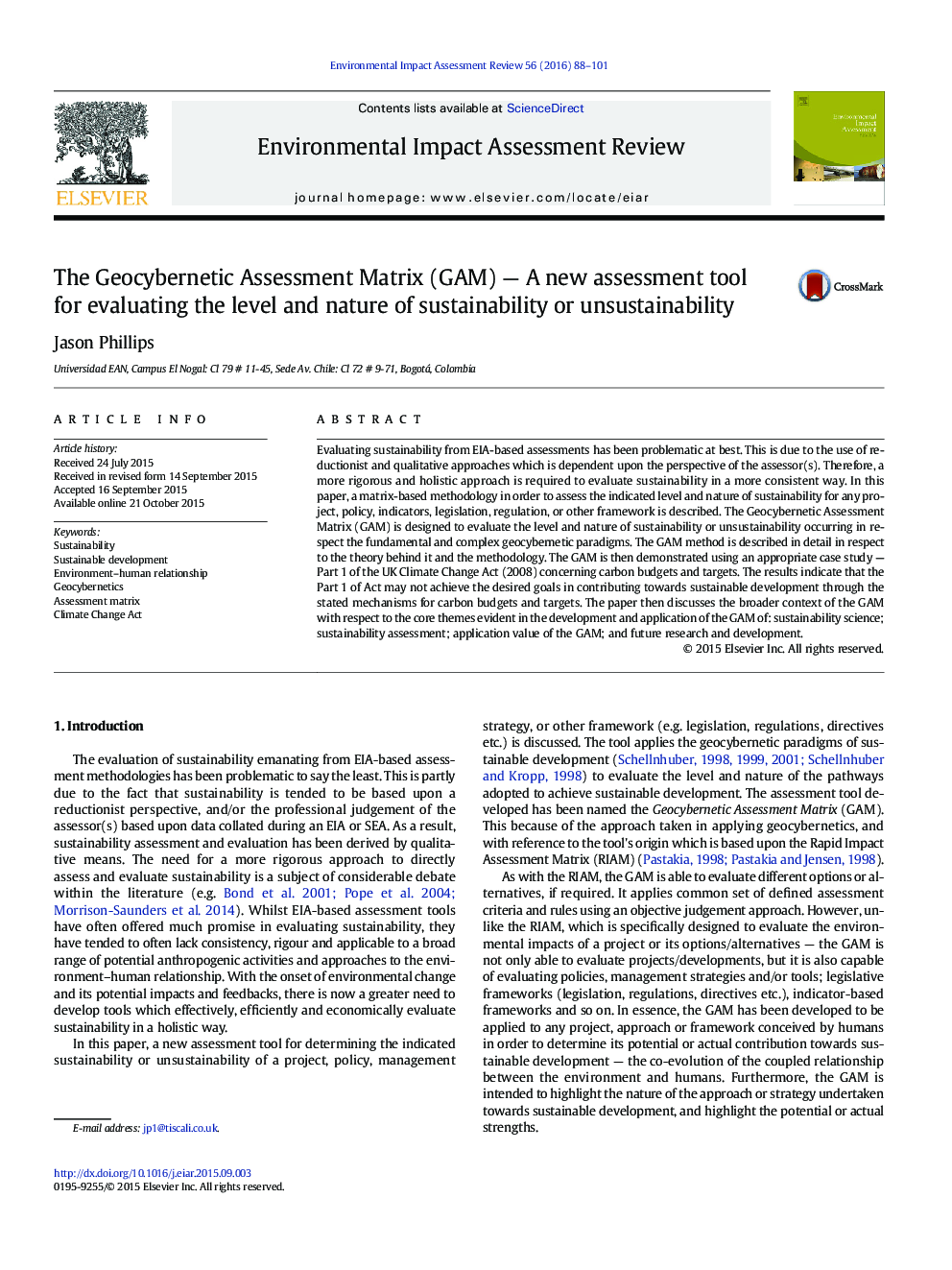| Article ID | Journal | Published Year | Pages | File Type |
|---|---|---|---|---|
| 1052677 | Environmental Impact Assessment Review | 2016 | 14 Pages |
•A new assessment tool called the Geocybernetic Assessment Matrix (GAM) described.•GAM evaluates the level and nature of sustainability or unsustainability.•GAM demonstrated by application to Part 1 of the UK Climate Change Act (CCA).•Part 1 of CCA has significant flaws in achieving a sustainable pathway.•GAM offers a potentially useful tool for quantitatively evaluating sustainability.
Evaluating sustainability from EIA-based assessments has been problematic at best. This is due to the use of reductionist and qualitative approaches which is dependent upon the perspective of the assessor(s). Therefore, a more rigorous and holistic approach is required to evaluate sustainability in a more consistent way. In this paper, a matrix-based methodology in order to assess the indicated level and nature of sustainability for any project, policy, indicators, legislation, regulation, or other framework is described. The Geocybernetic Assessment Matrix (GAM) is designed to evaluate the level and nature of sustainability or unsustainability occurring in respect the fundamental and complex geocybernetic paradigms. The GAM method is described in detail in respect to the theory behind it and the methodology. The GAM is then demonstrated using an appropriate case study — Part 1 of the UK Climate Change Act (2008) concerning carbon budgets and targets. The results indicate that the Part 1 of Act may not achieve the desired goals in contributing towards sustainable development through the stated mechanisms for carbon budgets and targets. The paper then discusses the broader context of the GAM with respect to the core themes evident in the development and application of the GAM of: sustainability science; sustainability assessment; application value of the GAM; and future research and development.
